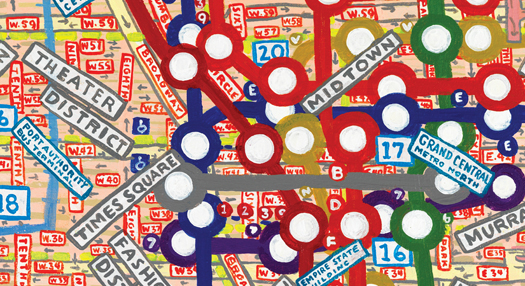
June 30, 2011
The Texting Culture of the Philippines

Roadside signage, advertising a cell phone special
It must have been as late as 2005 when people still had to check if you were okay with texting. “You text, right?” a friend once asked. “Of course,” I wrote back. “I’m Filipino.” I’d been texting for years prior. My cousins in the Philippines could text out lines of Shakespeare almost as fast as I could type them on a computer. Even my 80-year old grandmother was texting before my friends in the States understood the concept.
A few months ago, Mashable published an intriguing statistic. The United States had shot up to the number two world leader of texting, with a whopping 420 texts per user per month, up from just 13 in 2003. But if the United States is number two, who’s number one? It’s not tech-friendly Japan. It’s not Kenya, an acknowledged world leader in mobile banking. It’s the Philippines, that Southeast Asian nation of over 7100 islands and 94 million people, almost all of whom, apparently, are texting away at a rate of 600 messages a month.
The reasons for the high rate of SMS usage are the subject of much speculation. As in most developing nations, mobile phones offer Filipinos a chance to leapfrog weak urban infrastructure to join a global telecommunications network (authors like Tom Standage have explored this thrilling field). While Manila is a heavily wired and wifi-enabled city, the provinces still struggle with basic services. Family members of mine who would otherwise need to leave the house and visit a local phone operator to make a call now simply use their mobile phones. And at a starting rate of 1 PHP per hour (that’s less than 2 cents at the current conversion rate), texting is affordable across socioeconomic strata.


Here and above: More cell phone advertising
Statistics are interesting, as are anecdotes. But what does this look like on the ground? The last time I visited the country, it was 2005, and texting was already firmly established. When I returned a half decade later, I found it’s become an institution. After trading business cards, we trade phone numbers, and a lot of follow-up is done over text messages. An entire text messaging dialect has arisen just for texting that even native speakers have trouble understanding (think of “lol” “brb” and “g2g” applied to almost every word).
Of primary import amongst mobile phone users, then, is ensuring you have a full load. One common way is to purchase a card, as in London, with a special code to top up. But far more common is simply handing over a few pesos to a convenience store owner. This person then uses a special code to transfer his or her load onto your phone. You can even transfer your load to them to receive cash in return, effectively creating a basic banking system.

Load Na Dito!
Most striking to me is the design decisions centered around the culture of load. Signs read “Load na dito” (meaning “load up here”) at virtually every convenience store, and they advertise special offers for the major service providers. Other signs, like customer feedback numbers painted on taxis, to even movie ticket signs and fire brigade trucks, reveal the omnipresence of texting in daily life.
I compiled this series of images to show the various design strategies, a mixture of formal and informal, that have arisen around the Philippines’ ubiquitous mobile phone and texting culture. The first few images show the distinctive banners and signs scattered everywhere, while the latter portion shows other designed media that reflect this. They come from around Manila and nearby Baguio, 10 hours’ drive north from Manila, and they’re representative of much of the country.
Observed
View all
Observed
By An Xiao Mina
Recent Posts
“Dear mother, I made us a seat”: a Mother’s Day tribute to the women of Iran A quieter place: Sound designer Eddie Gandelman on composing a future that allows us to hear ourselves think It’s Not Easy Bein’ Green: ‘Wicked’ spells for struggle and solidarity Making Space: Jon M. Chu on Designing Your Own Path
 An Xiao Mina is an American design strategist, researcher and artist who focuses on the role of technology in building communities and empowering individuals.
An Xiao Mina is an American design strategist, researcher and artist who focuses on the role of technology in building communities and empowering individuals.



